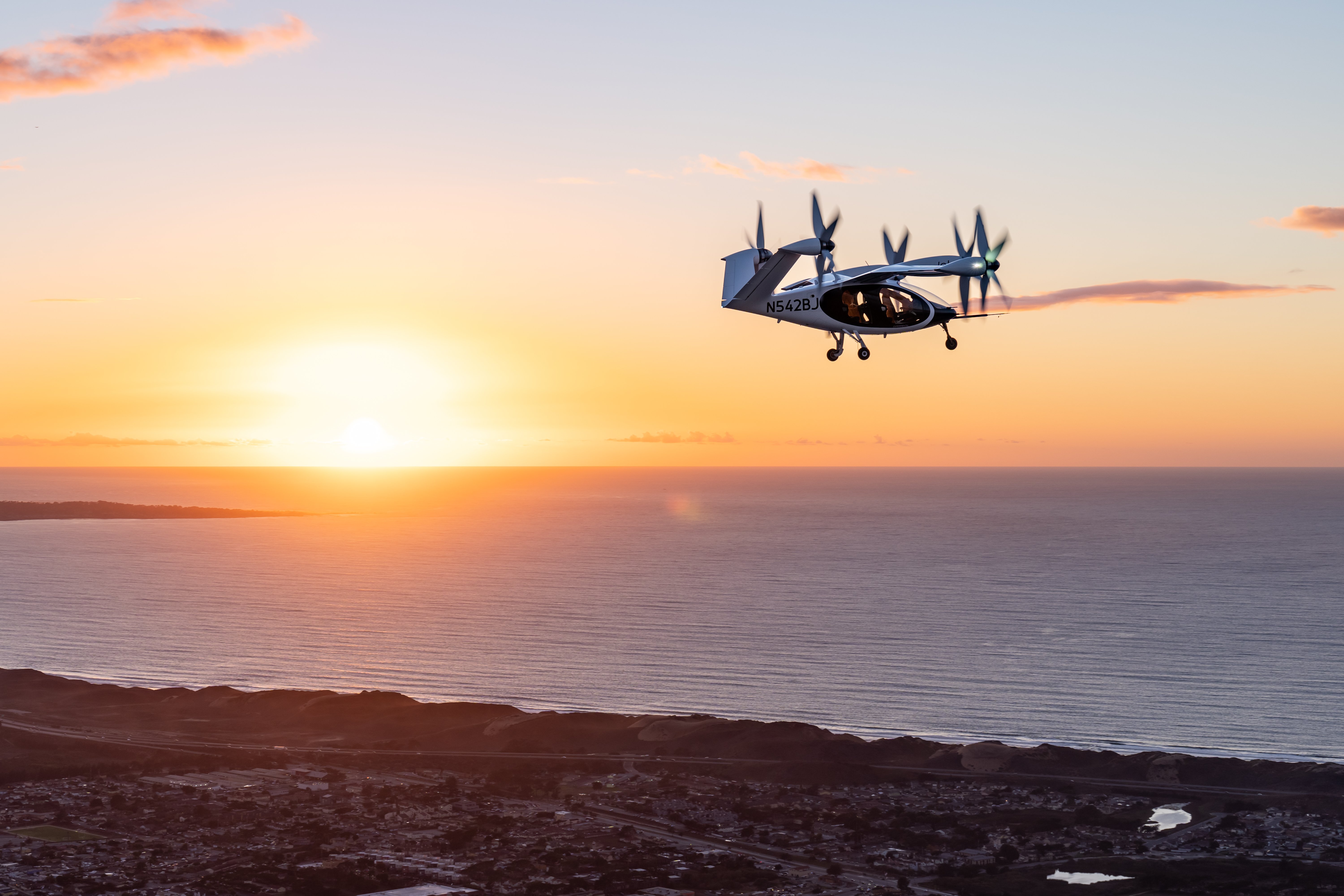In a key milestone for the U.S. eVTOL industry, the FAA has published its final airworthiness criteria for Joby Aviation’s five-seat JAS4-1 air taxi in the federal register. This marks the first time the FAA has settled on the airworthiness criteria for any passenger-carrying eVTOL aircraft, providing a framework that other eVTOL aircraft developers can leverage as they seek type certification for similar vehicles.
California-based Joby finished submitting its certification plans for the JAS4-1 model to the FAA last July. On February 21, the company announced that the FAA had approved those certification plans, marking the completion of the third of five stages in its certification process. The company has already gotten a head start on the fourth stage, which involves thousands of tests and inspections in accordance with those FAA-approved plans. It expects to have the aircraft certified and in service by the end of 2025.
The FAA intends to certify eVTOL aircraft such as Joby’s as “powered-lift” vehicles under a “special class” process defined in 14 CFR 21.17(b)—a significant deviation from its original strategy of using Part 23 rules for small airplanes with special conditions. Because there are no established powered-lift airworthiness standards, the FAA must approve special airworthiness criteria for every eVTOL model on a case-by-case basis via a G-1 issue paper.
Joby and the FAA agreed on a G-1 certification basis in 2020, making the company the first eVTOL developer to reach this regulatory milestone. However, the air safety agency switched over to 21.17(b) rules in May 2022, and because Joby had not completed its type certification in the allotted three-year period, it needed to update its certification basis and apply for an extension, which the FAA granted.
The FAA published its proposed airworthiness criteria for Joby’s aircraft in the federal register in November 2022, opening it up for public comment. That document proposed some new performance-based airworthiness criteria, which the FAA developed “because no existing standard captured the powered-lift’s various flight modes and electric engines, and some unique characteristics of their propellers.”
Harmonizing with European Regulator EASA
In the issuance of its final airworthiness criteria for Joby’s eVTOL aircraft, the FAA made a few amendments based on public feedback. Notably, the agency is making an effort to harmonize its certification approach with more stringent rules that the European Union Aviation Safety Agency (EASA) is developing. According to the document, the FAA met with EASA representatives from October 31 through November 2 to promote “harmonization activities between EASA and FAA on the requirements and means of compliance for type certification of powered-lift/VTOL aircraft generally.”
Although these discussions did not pertain specifically to Joby’s aircraft, the FAA noted that it updated Joby’s proposed airworthiness criteria as a result. It has added the sentence: ‘‘The applicant must prevent single failures from resulting in a catastrophic effect upon the aircraft.” This is meant to clarify the fact that, although the FAA allows single-point failures in an aircraft’s design—which EASA prohibits—there must be safety provisions in place to prevent such a failure from leading to a catastrophic impact.
FAA Adds “Increased Performance” Option
During the public comment period, EASA and several other participants also requested “the establishment of a higher safety target.” This prompted the FAA to introduce optional ‘‘increased performance’’ approval for aircraft that meet “higher performance standards for continued flight under certain failure conditions.” It thereby also had to define the baseline safety target for “essential performance.”
Joby can seek approval for the aircraft as having essential performance, increased performance, or both, depending on the operations. This is similar to EASA’s use of “category basic” and “category enhanced” approvals, although the FAA notes that “differences remain.”
“Increased performance is a higher level of safety that guarantees fly-away capability after any failure not shown to be extremely improbable,” the document states. “Essential performance does not require the aircraft to have the capability to land at the planned or an alternate landing site as is required for increased performance.”
The final document clarifies and consolidates the requirements for addressing various aircraft failure scenarios that could lead to a loss of thrust. It also adds the expectation that Joby’s eVTOL aircraft will be “capable of a controlled emergency landing following any condition where the aircraft can no longer provide the commanded power or thrust required for continued safe flight and landing.”
No Bird Deterrents Required
The FAA has scratched its proposed requirement for a bird deterrent system on the aircraft, citing insufficient data showing that such devices actually help to prevent bird strikes. However, the agency noted that it “encourages applicants such as Joby to consider voluntary implementation of these systems or similar bird deterrence mitigations, as good design practice.”
According to the final airworthiness criteria, the eVTOL aircraft must still be capable of safely withstanding a collision with a 2.2-pound bird, which is a requirement for transport category rotorcraft. Likewise, the propellers must be able to endure a collision with a 4-pound bird.
Last week, Joby announced it has acquired an existing manufacturing facility at Dayton International Airport in Ohio. This site adds to the company's existing footprint in Dayton and will be used for manufacturing aircraft parts to be supplied to Joby's pilot production line in Marina, California.
